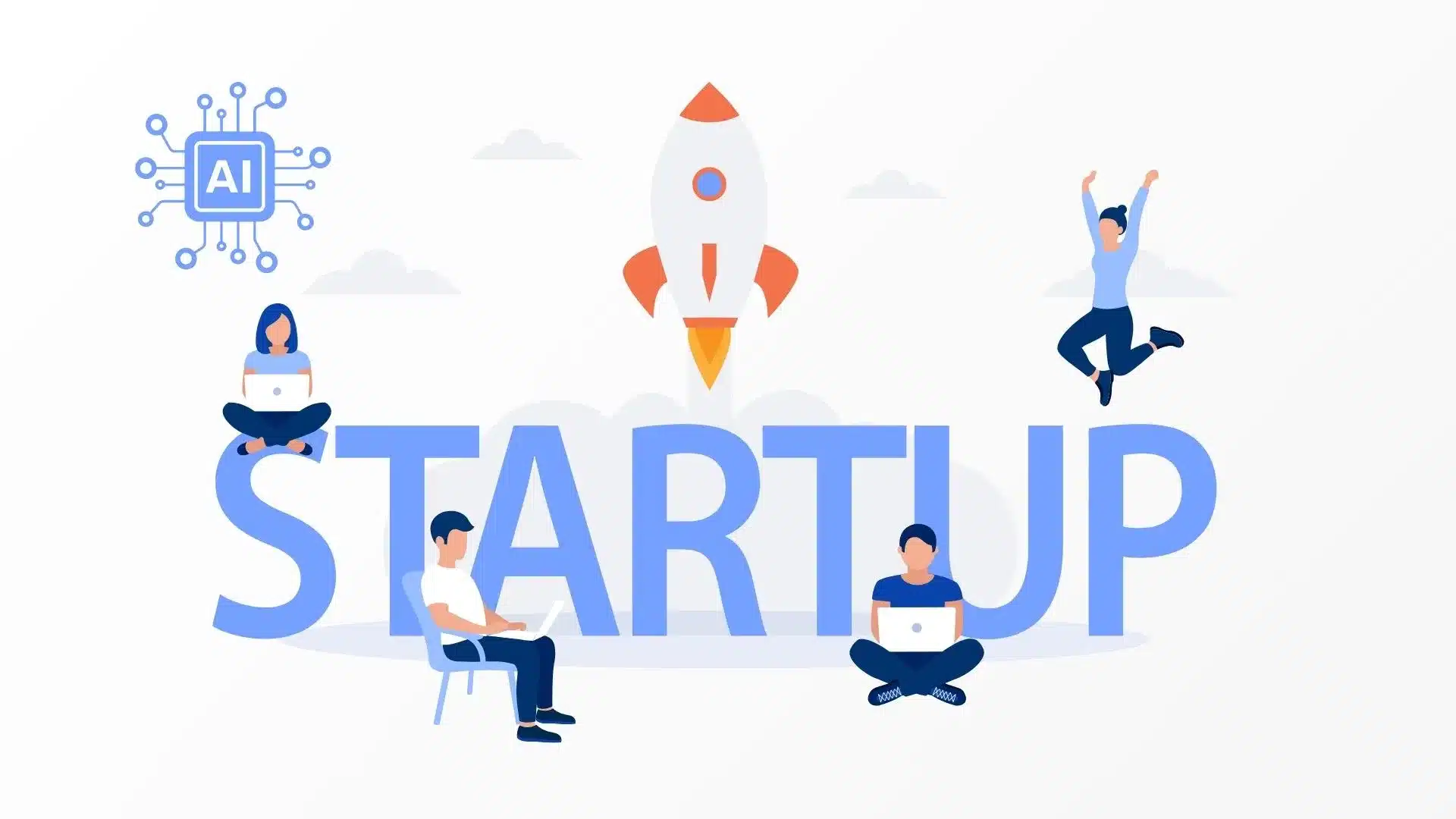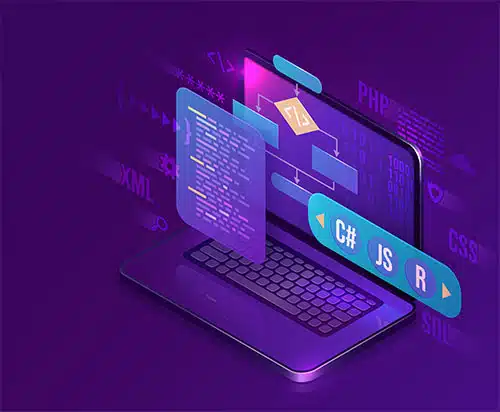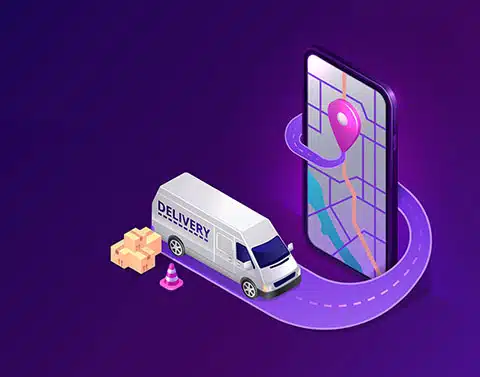Diving into the world of app creation or design requires a thoughtful game plan to ensure success. That means prepping well and understanding the nitty-gritty of building an app from scratch. You’ll need to know which tools to use and what to expect once your app hits the market.
Moreover, in today’s competitive market, almost 85% of businesses are leveraging existing apps to maintain a competitive edge and keep up with the latest tech trends.
It’s crucial to nail down your objectives, figure out how you’re going to promote your app, manage your project effectively, and factor in potential costs. The key is to craft an app that’s not just well-built but also designed with your users in mind, so they’ll utilize what you’ve created. From conception to launch, we’ll walk you through all the stages of developing your app from scratch below.
Key Takeaways:
Creating a successful app demands careful planning. From setting clear objectives to understanding market dynamics and technological trends, each step is vital. Here’s a complete guide to navigating the app development journey effectively.
- Determining Objectives: Define goals, understand user benefits, and anticipate outcomes to lay a solid foundation.
- Expanding Your Idea: Develop a clear vision, prioritize features, and decide on monetization strategies.
- Performing Market Research: Analyze competitors, understand user needs, and ensure demand for your app.
- Preparing Design: Construct wireframes, create prototypes, and optimize user flows for seamless interaction.
- Choosing Tech Strategy: Select development platforms, consider frameworks, and decide on coding languages.
- Building Your App: Follow guidelines, focus on user-centric design, and collaborate with developers effectively.
- Testing Your App: Conduct thorough testing to ensure functionality, usability, and performance.
- Building a Landing Page: Create a compelling marketing asset to promote your app effectively.
- Launching Your App: Submit to app stores, optimize for visibility, and monitor performance for continuous improvement.
- User Feedback: Gather feedback, prioritize improvements, and engage users for long-term success.
10 Steps to Create an App from Scratch for Beginners:
Step #1: Determining Your Objectives
What are the requirements for app creation from scratch, and how much time to create an app?

It’s important not to rush the process of creating a mobile app. Building an app from scratch and properly maintaining it takes time and careful consideration. Before you begin, it’s crucial to understand your motivations for creating the app. Are you looking to solve a particular problem, raise awareness for your brand, or reach a wider audience of potential customers? Taking the time to define your goals will set the foundation for a successful app-building journey.
- Define your goals, objectives, and target audience
- Ensure your potential users understand the benefits
- Determine how apps can solve the issues you are experiencing
- Determine how you make an app the results you expect
Step #2: Expanding Your Idea

To create your app and make money from an application, you need an idea. Write down your idea, the features you want, and how your application will work. Once you see a list of your ideas, you will be able to envision your app more clearly.
Determine which features you would like to have and which ones you consider crucial. This will serve as the basis for your app development process step by step in creating an application.
- Decide which features are unnecessary
- Create a unique way to sell your application
- Determine what type of app you will create such as an entertainment application
- Take the time necessary to completely sketch out your ideas
- Decide if your app will be free or if you intend to charge a fee
- Figure out exactly how you want your app to work
Step #3: Performing Market Research to build an app
What are the requirements for developing an app from scratch?

How to develop an app according to performing market and competitor research is critical for your success. Your idea needs to be viable. If many apps are already offering exactly what you intend, you may want to revise your plan.
- Research available competitor apps
- Determine the requirements of your potential users
- If you are charging for your apps, determine your price
- Look for mistakes and issues with similar apps currently available
- Determine if your apps will be in demand through resources including Google Trends
- Talk to people in real life and online to determine what they want
- Improve on the apps offering a solution to a specific issue
- Define the issue your application will solve
- Insight, research, and preparation are critical for your success
Step #4: Prepare Designing of Your Application

We determine how to make your mobile app from scratch where you intend your mobile app to be used. If you research for creating an app from scratch, the information will be different than determining how to design it for Android vs iPhone. Your app must run smoothly for your desired target.
Start by constructing a basic skeleton called wireframes. Wireframing will enable you to visually see the layout and flow of your app. This will eliminate any concerns regarding different graphic elements.
Once wireframes are done, you may want to move to create high-fidelity designs or mockups, or prototypes. Think of overall prototyping and creating mockups as a way to see the performance of your mobile app in the hands of end-users.

This is essentially a way to connect your thoughts to your final mobile app before you begin development.
- To meet your goal, the order and number of screens must be optimized
- Create numerous screen flows for each task to determine the best user performance
- Decide if you want to create a prototype online or offline
Deciding on a prototype is more crucial
You must decide how to build your prototype before determining how to create a mobile app. If you decide to go with an online method, use one of the available tools like Moqups, Figma, Sketch, Fluid UI, Mockflow, NinjaMock, or Adobe Suite. You will discover numerous tools for creating wireframes and mockups.
Once you have selected your template or tool, you can begin, You need a representation of your user flows from start to finish to meet your goals.
If you decide to create your prototype offline, you can even simply use a printable sketch template or a pen and paper. You will save a lot of valuable time by creating your design prototype before developing your overall application.
Step #5: Choose a Tech Strategy to Create an App

You need to know your target audience, budget, and requirements. The next step to code an app for beginners is selecting your programming language and platform. You will be developing your app for a specific operating system.
As a Mobile Application Developer, You need to decide if you are building an iOS or Android app. Your development requires access to either the Apple App Store or the Google Play Store. This will require:
- A significant budget
- Two development teams, one for each operating system
- You will be unable to streamline updates if two codebases are being managed
Which app development frameworks should you consider?
You can create a hybrid application capable of running on both iOS and Android. The available frameworks include Framework 7, React Native, and PhoneGap. Using these resources will eliminate the need for two separate teams.
If your budget is limited, the best option is a hybrid application. You need to determine any additional features. Any additional requirements will increase your budget and may result in future issues.
If you do not have any coding experience, you can use an app-building platform. This type of platform includes BuildFire, AppSheet, and Appy Pie. You select your template, drag, and drop to create your app. You will be able to decide how your app idea is developed.
More Details: Top App Development Frameworks for Developing High-Quality Mobile Apps
Why should we avoid choosing free app builders?
Although these platforms will save you a lot of money and time, you need to consider the disadvantages. Free app builders generally offer no security features and poor performance. You will not have complete control of your app. The disadvantages include:
- Lagging performance
- Watermarks
- Lack of customization
When you use an app builder, you will decrease your developmental budget by 75 percent. Once you have chosen the developmental path, you need to decide on the programming language for your application.
If you are building an Android app, you will need to use Android Studio. You can use XML for designing your interface. You can use any language including C++, Java, and Kotlin to write the logic.
Google has stated over half of all developers use Kotlin for app development. Kotlin is the best option for beginners. You will need to understand Swift language and use the Xcode IDE for the development of an iOS app. Apple is using C-based languages far less often.
Your best bet can be to create using a hybrid framework like react-native to save initial costs and get a highly maintainable codebase. How much time take to create an app speak to your development expert to discuss which is the best-suited approach for you.
Our experts can help you in developing your next world-class mobile app.
Step #6: Building Your App

Make certain you have considered all of your requirements for building a high-quality mobile app. You will need to allow enough time to ensure you follow the correct guidelines. The following tips are important for your success in how to build an application.
Tips for your app development success
- Eliminate any elements not offering support for user tasks.
- Use one input field if at all possible. Users will have to switch modes if they use multiple fields. This will result in a poor experience with users leaving your app almost immediately.
- Avoid the overuse of push notifications. The users will become irritated and uninstall your application.
- To meet the demands of your users, future-proof your app. Make certain future development will be profitable. Your app needs to be marketed efficiently. The faster you earn a profit, the sooner you can include more features for growth.
- You need a fast database for your application to be successful. Always consider the data structure, required size, data security, safety, scalability, and speed.
Once you have finalized the design and technology strategy, it is now time to engage the developers and get the apps developed as per your needs. If you are not a technology programmer yourself, we would recommend using a development studio to help you with this process.
How much time to create an app, you must choose the correct development partner and methodology to successfully implement your phone apps.
Step #7: Test your Developed App

Once you have finished developing your app, automated testing is necessary to make sure there are no bugs. Make sure your apps offer an intuitive experience, and test your wireframes. At a minimum, you should conduct both an internal and external test.
Internal testing is when your development team tests the application like they are the end-users. External testing is when you give your phone app to someone not familiar with it for testing. The purpose of testing is:
- Fixing bugs
- Correcting any issues affecting the user experience
No tools are necessary for internal testing. There are tools available for external testing including TestFairy, Ubertesters, and UserTesting.
Step #8: Build the Landing Page of your App

Do not overlook the importance of marketing. Even if you create exceptional phone apps, your users must be able to find them. Your best option is to create a landing page. You should include:
- What your mobile app does
- How much time to create an app
- Who your application is intended for
- The reasons your app is helpful
- A CTA or call to action
- An invitation to join the waitlist
The idea is to create a link between potential customers and your application. Once a user tries your app, they may become a customer. Include all of the following components on your app’s page.
- The top of your page should include a clear headline
- An explanation video or short introduction paragraph
- An iPhone mockup or apps screenshot
- A CTA to install your phone application
- A complete breakdown of all benefits and features
- An about us section or a story about the creators of your application
Other elements on your app’s page
Your headline and CTA should be before the fold of your page. You can make a more personal connection by including your About Us section near the top of your page. Your page will attract potential users interested in your application.
You will be unable to blog on a phone App Store page. Good alternatives are requesting feedback or sending out newsletters. Your web page will create a strong connection to the target audience you are attempting to reach. You can retain the connection by requesting an email address.
The most effective tools for building your webpage include Leadpages, WordPress, and Strikingly. You do not need to understand HTML to use any of these tools. An App Store page is not the only way to market your application.
You can increase the installs for your application by taking advantage of other marketing channels. A lot of them will require a landing page to work effectively with your website. Only a few days are necessary for you to create an effective landing page for your phone app.
Step #9: Launching Your App

Once your application has been submitted to the app store, you have completed a successful launch.
- Inform your potential users your phone application is now available
- Adhere to the guidelines of either the Apple App Store or Google Play Store
- Improving your optimization score for the app store will promote your success
Also Read:
How to Upload an App to the Apple store?
How To Upload an App to Google Play Store
Step #10: User Feedback

Consider the importance of user feedback when developing your application.
These are the following tips:
- Use the feedback of your users to make improvements to your apps
- Gather data through mobile application analytics
- You can gather qualitative data through interviews and surveys
- Ensure a personal connection with your users by speaking frequently
To ensure your phone app is properly promoted, implement an in-app review popup to get as many reviews as possible. You can collect your feedback by sending an in-app form directly to the owners to ensure your users take action.
- Write down any possible improvement to your apps
- Fix any obvious mistakes
- Fix any simple issues
How do the Latest Technologies Play a Crucial Role in Creating an App?
One major way modern technologies assist in building new applications is through cloud computing. Cloud computing enables developers to access and utilize vast amounts of computing power, storage, and other resources on-demand, without the need for on-premise infrastructure. It allows for quicker and more scalable development, as developers can easily scale their applications up or down as needed, reducing costs and time constraints.
Another way modern technologies aid in building new applications is through application programming interfaces (APIs). APIs provide developers with pre-built functionalities and services that they can integrate into their applications, eliminating the need to build these features from scratch.
For example, developers can use APIs for payment processing, geolocation, or social media integration, saving valuable time and effort. It speeds up the development process and enhances the application’s quality by leveraging the expertise and reliability of these existing services.
Modern technologies facilitate collaboration and agile development methodologies, which contribute to the creation of new applications. With tools like version control systems, project management platforms, and communication tools, developers can easily collaborate, regardless of location.
It enables agile practices such as continuous integration and continuous delivery, where developers can quickly and seamlessly integrate new features into the application. By promoting collaboration and agility, these technologies assist in building applications that are constantly evolving and meeting the changing needs of users.
Modern technologies play a crucial role in building new applications by providing resources such as cloud computing, APIs, and collaboration tools. These technologies empower developers to create scalable and efficient software. With the continuous advancement of modern technologies, developers can build even more innovative and user-friendly applications in the future.
How to Market Your App Successfully
It is crucial to understand your target audience and create a targeted marketing strategy to market your app successfully.
Conduct thorough market research to identify your app’s potential users and their needs. It will help you tailor your marketing efforts towards reaching the right audience and resonate with their interests.
Once you have a clear picture of your target market, optimize your app’s visibility on app stores by using relevant keywords and an engaging app description. Additionally, leverage social media platforms to promote your app and engage with potential users. Utilize eye-catching visuals, informative content, and user testimonials to effectively communicate the key features and benefits of your app.
Finally, consider collaborating with influencers or reaching out to relevant bloggers for app reviews to increase your app’s reach and credibility.
In addition to targeting the right audience and utilizing social media. It is crucial to continuously monitor and analyze your app’s performance. Keep a close eye on user feedback, ratings, and reviews, and respond promptly to any concerns or queries.
It will show your dedication to customer satisfaction and help improve your app based on valuable feedback. Furthermore, implementing app analytics tools can provide insights into user behavior, allowing you to optimize your marketing campaigns and make data-driven decisions.
Lastly, consider implementing a referral program or offering incentives for users to share your app with their friends and family. A word-of-mouth recommendation is a powerful marketing tool, and incentivizing referrals can boost your app’s popularity and user acquisition.
How to Secure Your App Data and Protect Your Users’ Privacy and Personal Information
Protecting users’ privacy and personal information is of paramount importance in today’s digital age. As developers, there are several steps we can take to ensure the security of our app users’ data.
- Implementing a robust data encryption system is crucial. By encrypting sensitive information such as names, addresses, and passwords, we minimize the risk of unauthorized access. Using industry-standard protocols like SSL/TLS can also enhance the security of data transmission.
- It is essential to obtain users’ consent and provide transparency about data collection and usage practices.
- Developers should clearly outline their privacy policies and make them easily accessible to app users. Moreover, collecting only the necessary data for functionality and minimizing the sharing of personal information with third parties are essential practices.
By prioritizing user privacy and adopting these measures, we can ensure the trust and loyalty of our app users while promoting responsible data-handling practices in the industry.
Latest Trends in Application Development 2024
1. Microservices
In 2024, microservices have revolutionized app development by providing a scalable and efficient approach. Microservices break down applications into smaller, loosely coupled components. With microservices, we can develop, deploy, and maintain these components independently. Furthermore, microservices facilitate continuous delivery and integration, improving the agility and resilience of applications.
With the growing adoption of microservices, developers can leverage technologies and frameworks, resulting in greater flexibility and innovation in app development in 2024. Moreover, microservices also increase the application’s agility, scalability, and flexibility.
2. FinOps
FinOps, the practice of optimizing cloud costs, is being leveraged by developers to manage and allocate resources more efficiently, ensuring cost-effectiveness throughout the app development process. This approach helps companies avoid overspending on cloud services and enables them to invest those savings into further app enhancements and innovations.
3. GreenOps
GreenOps, the integration of sustainability principles into operations, is driving developers to prioritize environmental sustainability throughout the entire app development lifecycle. From utilizing eco-friendly coding practices to optimizing energy consumption, GreenOps ensures that apps are developed with minimal environmental impact.
4. Distributed Computing
In 2024, distributed computing will have a profound impact on app development. With the ever-increasing demand for high-performance applications, distributed computing will allow developers to harness the power of multiple interconnected devices to handle complex tasks. This approach enhances scalability and efficiency in the app development process.
It enables developers to distribute computational load across multiple devices, resulting in faster processing speeds and reduced latency. The adoption of distributed computing in app development in 2024 will revolutionize the industry, ushering in a new era of powerful applications.
5. Artificial Intelligence & Machine Learning
Integrating AI and ML into the application development process can revolutionize the way applications are built and improved. AI can assist in automating various development tasks such as code generation, testing, and bug fixing, which can significantly speed up the development process. ML algorithms can analyze vast amounts of data to identify patterns, trends, and user preferences, enabling developers to create personalized and more intuitive applications.
The Bottom Line
You should always treat your phone application with the same respect you show your business. The purpose of your application is the same as your business, to provide your customers with value for a fee. For your application to be successful, it must be useful.
Remember your Mobile apps are not a game or a toy. Take the steps outlined above one at a time. As you make progress, your momentum will build.
Make certain your phone application is updated regularly or your search rankings will be lost. This will cause your downloads to drop. Do not rush the process or you may make costly or critical errors.
In no time at all, you will have developed a successful and useful mobile application. If you experience too many difficulties creating your app, outsource your development to the experts.
Our experts can help you in making how to create an application from scratch and develop your next world-class mobile app.
Frequently asked questions:
Q1: How can an agency help build a high-quality custom app?
There are many ways that an agency can help build a high-quality custom app. One way is by providing experienced and knowledgeable developers who can create the app according to the specific requirements and specifications. Another way is by ensuring that the app undergoes rigorous testing before it is released to the public. The agency can also provide ongoing support and maintenance for the app, in case any bugs or issues arise after its release.
Q2: How much does it cost to make an app?
There is no one-size-fits-all answer to this question, as the cost of developing an app depends on several factors, including the complexity of the app, the number of features it has, and who you hire to develop it. However, you can expect to pay anywhere from 20000$ to 200000$ for MVP / first version of the app.
Q3: What is the fastest way to build an app?
There is no single “fastest” way to build an app, as the process will vary depending on the specific app being created. However, some tips to help speed up the process include:
- Defining the app’s purpose and functionality early on
- Creating a detailed plan and timeline
- Breaking the project down into smaller tasks
- Working with a professional developer or team
- Using a platform like Appy Pie to streamline the process
Q4: Which are the top mobile app development platforms?
- Visual Studio
- Xcode
- Android Studio
- OutSystems
- ServiceNow App Engine
Q5: How long does it take to build an app from scratch?
Building an app from scratch depends on the complexity of the app and the number of people working on it. A simple app could be built in a matter of weeks, while a more complex app could take months or even years.
Related Blogs:
- 10 Web Application Development Trends Every CTO Should Know
- Checklist of 10 Must-Have Security Items for Mobile App Developers
- Top Ways How Mobile App Development is Influenced by IoT
- Some Tips to Improve Mobile Apps Personalization
- Impact Of The Internet Of Things On Mobile Apps
- What to Expect from AI in Mobile App Development
- Top Mobile App Development Trends
- Reasons Why You Should Invest in Mobile App Development


























